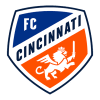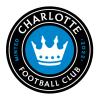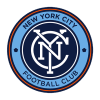It is time for the first installment of our usual preseason slate of content: One Big Question for Each Team! As usual, some of these will be THE big question – the definite article matters there – and some will be A (indefinite article!) big question. And it’ll be interesting, looking back, to suss out which was which.
Eastern Conference first. Western Conference tomorrow.
In we go…
Will Josef get healthier?
For most any other forward, 12 goals in a shade over 1600 regular-season minutes would be damn fine work. For Josef Martinez it was an indication that he was… maybe 65 percent healthy, 70 percent if we’re being charitable?
Most ACL repairs these days are pretty straightforward but Josef’s wasn’t and it showed. He had multiple surgeries, considered retirement, didn’t play for more than a year, and once he did set foot on the field he wasn’t the same. He lacked a lot of his previous burst and only rarely showed that terrifying ability to hunt gaps in between scrambling defenders that had defined him (and Atlanta) from 2017-19.
Saying “a step slow” does not quite do it justice, because it wasn’t really a lack of straight-line pace; it looked more like a loss of agility and a hesitancy to throw himself into the types of physical battles he’s dominated since 2017. If this is the extent of the new Josef, he’s still really good! Dude scored at the same clip as the Golden Boot winner, just about
But he was less of an all-field, space-creating off-the-ball force. There’s a reason why Atlanta’s playmakers had so much room in the half spaces in 2017, ‘18 and ‘19, none in 2020, and just a decent amount in 2021. With Prime Josef operating off the back shoulder, defenders didn’t dare step. With this version of Josef, they were able to pick and choose and gum up the works
Can they get their DP signings right?
This is the big question for the Fire, who parted with two of their DPs (center forward Robert Beric and winger Ignacio Aliseda) after last season. I’m genuinely surprised they didn’t make it 3-for-3 with Gaston Gimenez handed an exit as well, but they brought back the Paraguayan central midfielder (I’m not going to call him a “defensive” midfielder after what he’s shown the past two years) for a third year on a DP deal. The numbers on his deal aren’t public, though I don’t think you’d be foolish to assume they can buy this one down with TAM in order to keep all three U22 Initiative slots usable while still going as large as possible on the other two incoming DPs.
Anyway, Chicago’s DPs have been notoriously underwhelming over the past dozen years, with scattered exceptions here and there. I actually quite like a lot of the rest of the roster build – Federico Navarro’s fun and filled with potential, the defense finally makes sense and Gaga Slonina is the best teenage goalkeeper in MLS history – but it still won’t amount to much unless they get in a pair of big-time, highly productive attacking DPs.
Worth noting: sporting director Georg Heitz already got his mulligans in Beric and Aliseda.
Will they play out of a 4-2-3-1?
New GM Chris Albright came from Philadelphia and brought new head coach Pat Noonan with him, and both have talked about the way the Union did things both on and off the field.
The off-field part, which mostly comprises building up a conveyor belt of talent via the academy, is the hard part and won’t be a completed project for years. The on-field part means high-tempo, transition-based, vertical soccer based upon making the field compact defensively and winning second balls. And over the past few years, that’s mostly come out of a 4-4-2 diamond formation.
Cincy have some pieces for that, though not a ton (central midfield remains a barren wasteland). They have, however, spent lots of money and resources over the past few years acquiring pieces designed to play a front three, particularly with wingers Alvaro Barreal and Isaac Atanga, as well as last year’s second overall SuperDraft pick Calvin Harris. Those three guys also just so happen to be three of the highest-upside players on the team.
Would it be indulging in the sunk cost fallacy to delay what I presume is Noonan’s vision and go with the 4-2-3-1 from the jump just because he’s got the pieces on hand for it? Maybe. None of Barreal, Atanga or Harris is so good, or so high-upside, that any coach should rearrange an overall strategic vision just for them.
At the same time, the best coaches – and I’m very much including Noonan’s old boss in Philly here – find a way to get the best out of the pieces they have based around principles of play more than just formations.
Will they get Jaylin Lindsey healthy for a full year?
Four years ago, before the cascade of injuries stalled out his career, Lindsey was considered the same tier of fullback prospect as Sergino Dest. Skillful, quick, two-footed, great vision…
He’s lost so much time since that clip, but he’s still just 21 years old. If he can get healthy and stay healthy for a bit, he’s got time to develop into the type of player we all thought he could be back when he was starting and starring for the USYNT.
As a reminder: Lindsey was a homegrown player in Sporting KC, then the expansion side went out and brought the Charlotte native back home via trade.
Can they inject off-ball pace into their play again?
Columbus played slooooooow last year. As per Second Spectrum’s tracking data they were 25th in total distance run at high speed, and 26th in both total sprints and total distance covered at a sprint. They were 19th in off-ball attacking runs per 90 minutes.
The danger in being a methodical team is that if you’re not careful, “methodical” can easily shift to “ponderous.” That’s what happened in Columbus for most of last season, and they suffered for it across the board.
It was especially apparent in transition, where the Crew finished dead last in shots created. Even Miami and Cincy were better in that phase of play.
Can Hernan Losada wring that same level of commitment out of the troops again?
D.C. United were so much fun to watch in the Argie manager’s debut season, and a huge part of what made them so much fun was the buy-in Losada got up and down the roster. Julian Gressel and Ola Kamara were both revitalized, and Andy Najar’s renaissance was one of the stories of the year. Kevin Paredes burst onto the scene, and Moses Nyeman started to make a dent. They all played at a million miles per hour, and this truly is the good stuff.
But emptying the tank week after week took a toll so the Black-and-Red hit the wall in early October. They finished the year with a 2-4-1 final month that cost them a trip to the postseason.
Forget that final month, though, and consider this: I have spoken with lots of players over the years who will tell you, straight-up, how hard it is to bring that same energy to a system like Losada’s season after season. That is why the Red Bulls, even in their glory days, had so much roster turnover, and there is a reason why the Union are willing to do the same with all but a few key veterans. Maximum Overdrive requires fresh blood sacrifice to keep humming.
It does not, however, look like D.C. are going to have that. As of now the roster is largely the same group that came up short in 2021. The hope is that they’ll collectively find five percent more to give, but the truth is that in a system like Losada’s, most players find five percent less in Year 2.
Are Gregore and Jean Mota elite building blocks?
My long-held belief about this game of ours is that if you get central midfield right, that can cover up a lot of blemishes. Based upon the sample size provided by the 2021 season, I do think that Chris Henderson got it right with the Gregore signing. He’s not a prime Ozzie Alonso or Dax McCarty-level building block, but he was very good – a true silver lining during a year of misery.
This offseason Henderson went out and got another prime-aged Brazilian, central midfielder Jean Mota, to play next to/slightly ahead of Gregore in what I’m presuming will be a bog standard 4-2-3-1. If Mota is as good this coming year as Gregore was last year, well, Miami might finally have themselves a foundation to build something recognizable upon.
To be clear, I don’t think either of these guys will be real ceiling-raisers. But Miami can’t spend any time worrying about the ceiling these days – hell, I’m not even sure they can see the damn thing. They need to worry about raising the floor first and foremost, and that’s what a solid, no-frills central midfield tandem can do.
Can Mason Toye live in the box?
Toye’s xG per shot, as per Opta:
- 2019: 0.147
- 2020: 0.139
- 2021: 0.222
That is a massive, staggering year-over-year increase, and it speaks to Toye’s transformation from “guy who drifts around and only scores bangers” to “true striker who lives for one-time finishes in the box.” He never would’ve scored this goal before 2021:
We’ll always remember the bangers, but they’re not sustainable; you get three or four of them a season at the very most. If Toye is going to live up to his potential – and to be clear his potential is “20+ goals and a spot with the US men’s national team” – he needs to stay healthy and keep finding great shots.
Last year was hugely promising in that regard… except for the injuries. Let’s see if he can replicate what he did in 2021 over 2000+ minutes in 2022.
Will Bruce change the team’s shape?
The Revs have gone out in the playoffs in the same fashion twice in a row: they got out-numbered in midfield, ceded control of the most valuable territory on the pitch and eventually lost the game because of it. They’re obviously a super-talented team and the above was not a problem – to put it mildly – through most of the regular-season.
But it sure has been in the playoffs, and let’s not forget that this was the culprit back in Couva in 2017. That team, like last year’s Revs, played a wide diamond that essentially asked the d-mid (Michael Bradley in 2017; Matt Polster last year) to go 1-v-3 in the year’s biggest game. And it, uh, didn’t work out so great.
The natural thing would be to move to a 4-2-3-1, but I’d actually argue New England’s personnel is better-suited to a 3-4-1-2 with a double pivot, width from the wingbacks and Carles Gil sitting underneath the forwards. But Bruce hasn’t really ever been a 3-5-2 guy, save for a couple of very memorable games in South Korea 20 years back.
Whatever the shape, though, he’s got to get more numbers into the middle in the most important games. If he doesn’t, well, we’ve seen what happens. All of us.
What’s Tayvon Gray’s ceiling as an attacking right back?
Gray, a former US youth international who became the second-youngest starter in MLS Cup history last month, has never really been a natural on the overlap. He was mostly a center back for the US U-17s, and has played a decent amount in the midfield as well in the youth ranks for both club and country.
Which is not to say he hasn’t played right back – clearly he has. But whenever he’s been there he’s been more of an old-fashioned, stay-at-home right back who’s not tasked with pushing forward to get the edge and create chances. The issue: NYCFC ask their fullbacks to push forward, get the edge and create chances.
So when Gray was pressed into service down the stretch and into the playoffs thanks to an injury to starting right back Anton Tinnerholm, who has been one of the best attacking fullbacks in MLS for the past several seasons, there were very real questions about what would happen to the attack. And while Gray at first struggled to provide the final ball, he became more confident and precise as the playoffs wound on.
It was encouraging, bordering on revelatory by the time the Pigeons were hoisting that trophy. I think it’s natural to expect continued, steady progression from Gray, and for Ronny Deila to keep his patience when the kid has a bad game (it happens). But Tinnerholm was a Best XI-caliber player, and at times a singular attacking force for this team. There aren’t a lot of right backs who can say that.
Maybe Gray will become one? If so, nobody really saw this future for him a few years back. But he’s done the job so far, so why stop now?
Can they find a home for Frankie Amaya?
Losing Sean Davis is a gut-punch, but I swear to you they have an ideal replacement already in the roster:
Amaya is a pressing machine who reportedly wants to play as an attacking midfielder, and who Gerhard Struber used as an attacking midfielder last year. It didn’t go great. It didn’t go great in Cincy when Amaya was used as a No. 10 there, either.
But you know where he’s been very promising and occasionally awesome over his still-very-young career? Deeper, when played as a midfield ball-winner/destroyer. He so obviously belongs in that role, and so obviously has a higher upside there, that I just bang my head against the desk whenever I see him lined up anywhere else.
Please, just play him in that double pivot with Dru Yearwood. It’ll work! He’ll be great at it!
Will a new crop of DPs mean a big step forward for the Lions?
I don’t want to rehash the Nani debate again (other than to say I was right), but obviously there is a hope that whoever the next centerpiece DPs are – and it looks very much like young Uruguayan star Facundo Torres will be one – they can provide both the out-of-the-blue moments of stunning quality Nani unleashed periodically throughout the first half of each of the past three seasons while, at the same time, having the legs to make it to the finish line.
That is a long way of saying that this team needs the guys they pay to be their best players to actually be their best players down the stretch. Most of the rest of the stuff is in place for them to be serious contenders. Get the DPs right, and maybe they climb to the top of that particular heap.
Can they improve the final ball in transition?
Second Spectrum data shines a light on what the Union’s biggest inefficiency was in 2021. Here are the numbers
- They forced opponents to defend 2155 transition states, third in the league.
- They managed 252 penalty area entries, fifth in the league.
- From that they created 14.5 xG… 19th in the league.
It’s probably not surprising that a team that sold a Best XI playmaker regressed in terms of chance creation year-over-year. I’ll argue that Daniel Gazdag, who’s clearly supposed to be Brenden Aaronson’s replacement on some level, deserves a full preseason to acclimatize himself before we judge too harshly (that said… he sure wasn’t great). And I think it’s natural to expect progress from Paxten Aaronson, who is pretty clearly ahead of where Brenden was at a similar age.
So I think they’ll figure this particular bit out. And if they do… well, it might be trophy time in Chester again.
Will they be able to press?
There were a couple of different elements to the secret sauce Bob Bradley used to create his best teams with LAFC. Obviously the greatness of Carlos Vela is a big part of it, and the brilliant distribution of Eduard Atuesta was another, and the relentless way they pursued those Zone 14 slip-passes into the box was a third.
But at the heart of all of it, LAFC were a pressing team. They were hugely mobile across the front six and played a high, aggressive backline basically up until things started falling apart this past year. It led to what I still think is the best soccer I’ve seen in this league.
Bradley’s in Toronto now and while this roster is similar in some ways, I would not, for a single second, call them “hugely mobile across the front six.” In fact I’d argue a lack of mobility on the front line and in midfield is maybe my biggest worry for this group, which I just don’t think is made to take the kind of hunt-and-recover risks a pressing team has to.
And if that’s the case, then I don’t know exactly how they’re going to play. Which makes it all pretty fascinating.


























